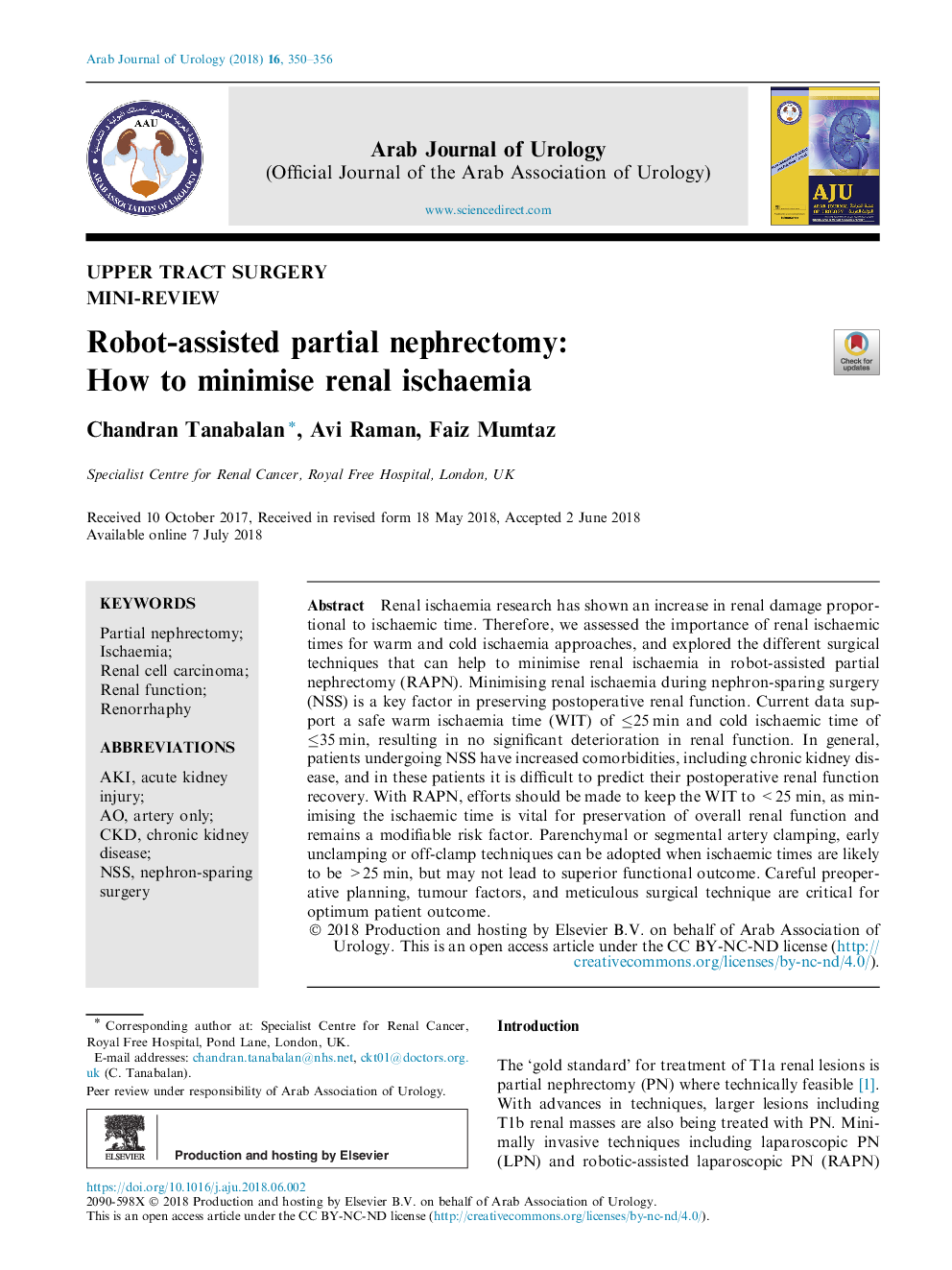| کد مقاله | کد نشریه | سال انتشار | مقاله انگلیسی | نسخه تمام متن |
|---|---|---|---|---|
| 8952879 | 1645881 | 2018 | 7 صفحه PDF | دانلود رایگان |
عنوان انگلیسی مقاله ISI
Robot-assisted partial nephrectomy: How to minimise renal ischaemia
دانلود مقاله + سفارش ترجمه
دانلود مقاله ISI انگلیسی
رایگان برای ایرانیان
کلمات کلیدی
موضوعات مرتبط
علوم پزشکی و سلامت
پزشکی و دندانپزشکی
اورولوژی
پیش نمایش صفحه اول مقاله

چکیده انگلیسی
Renal ischaemia research has shown an increase in renal damage proportional to ischaemic time. Therefore, we assessed the importance of renal ischaemic times for warm and cold ischaemia approaches, and explored the different surgical techniques that can help to minimise renal ischaemia in robot-assisted partial nephrectomy (RAPN). Minimising renal ischaemia during nephron-sparing surgery (NSS) is a key factor in preserving postoperative renal function. Current data support a safe warm ischaemia time (WIT) of â¤25â¯min and cold ischaemic time of â¤35â¯min, resulting in no significant deterioration in renal function. In general, patients undergoing NSS have increased comorbidities, including chronic kidney disease, and in these patients it is difficult to predict their postoperative renal function recovery. With RAPN, efforts should be made to keep the WIT to <25â¯min, as minimising the ischaemic time is vital for preservation of overall renal function and remains a modifiable risk factor. Parenchymal or segmental artery clamping, early unclamping or off-clamp techniques can be adopted when ischaemic times are likely to be >25â¯min, but may not lead to superior functional outcome. Careful preoperative planning, tumour factors, and meticulous surgical technique are critical for optimum patient outcome.
ناشر
Database: Elsevier - ScienceDirect (ساینس دایرکت)
Journal: Arab Journal of Urology - Volume 16, Issue 3, September 2018, Pages 350-356
Journal: Arab Journal of Urology - Volume 16, Issue 3, September 2018, Pages 350-356
نویسندگان
Chandran Tanabalan, Avi Raman, Faiz Mumtaz,